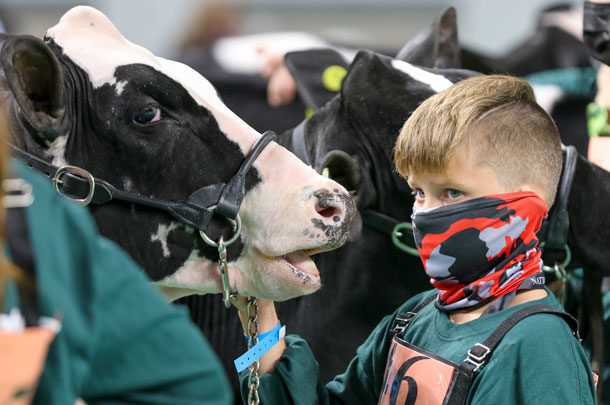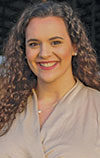On any given year during the first week of October, Madison, Wisconsin, is the hub for dairy enthusiasts from all over the world. Unfortunately, that wasn’t the case this year.
The announcement of World Dairy Expo’s cancellation due to COVID-19 was greeted by much disappointment from dairy producers, exhibitors and breeders. Across the country, several fall shows followed suit and also canceled their events, which sparked discussion among individuals and committees who were determined to find a way for cattle shows to go on.
“There were several of us that expressed the need to try and do something amid what happened with World Dairy Expo,” says Jenny Thomas, North American Open Dairy Cattle Show.
The efforts of Thomas and other dairy show enthusiasts in regions throughout the country led to the development of the Southern National Dairy Show, Stillwater, Oklahoma; Dairyland Classic Registered Dairy Show, Madison, Georgia; and North American Open Dairy Cattle Show, Circleville, Ohio. Show proponents also persevered to hold the annual North American International Livestock Exposition, Louisville, Kentucky.
The Southern National Dairy Show, usually held the second weekend of April every year, was canceled in the spring, and rescheduled to the fall to best serve health guidelines, says David Jones, Southern National Dairy Show chairman.
Because of COVID-19, show organizers had to make changes to abide by state health guidelines and reduce exposure, including providing handwashing stations and serving the exhibitor meal as a boxed lunch, Jones says.
“There were a lot of exhibitors from different states, many that we don’t normally get, but because World Dairy Expo was canceled, they decided to go to this show instead,” Jones says.
These first-time attendees praised the committee on the hospitality, friendliness and exhibitor-friendly atmosphere of the show, all while dealing with COVID, Jones says.
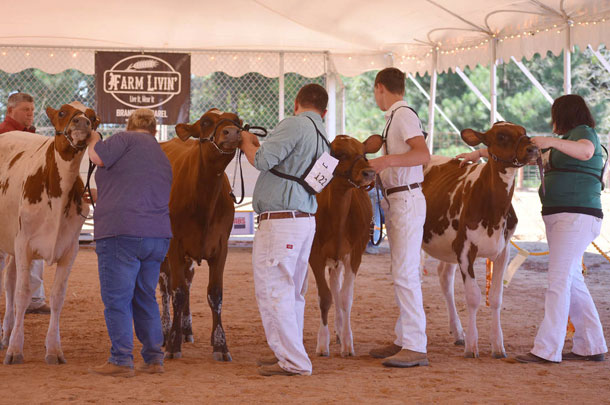
The first annual Dairyland Classic show was held from Sept. 30 to Oct. 3 in Madison, Georgia. 176 animals were shown, and more than 220 exhibitors attended the event. Photo provided by Jay Moon.
Dubbed the “Little Madison,” the Dairyland Classic Registered Dairy Show also received overwhelming support from dairy exhibitors and supporters, says Jay Moon, the show’s co-superintendent. The first-annual show, held from Sept. 30 to Oct. 3, far exceeded their expectations, and the committee has been asked to bring it back for the following year, Moon says. After many canceled events this year, the chance to exhibit their cattle boosted spirits, especially for younger participants, he adds. “One of the main reasons we did put on a show was so youth had the opportunity to show these animals they work with. That was extremely important to us.”
Moon adds, just as other industries are essential, agriculture is also an essential industry, and dairy shows are needed to keep businesses going. “This is essential for these individuals who have raised these herds. They need to get these animals out to market them.”
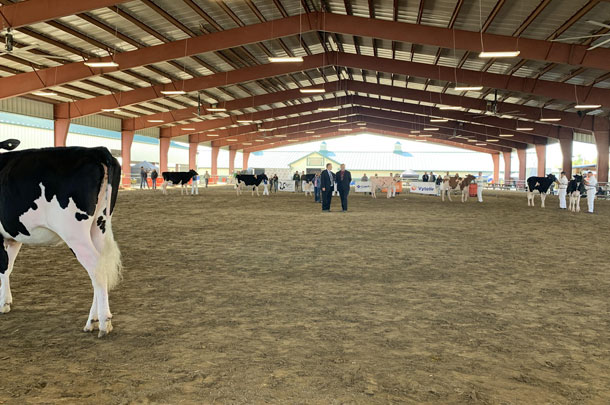
The North American Open Cattle Show was held from Oct. 1 to Oct. 8 in Circleville, Ohio. Twenty-three states were represented in the shows, and over 700 head of cattle were housed at the Pickaway County Fairgrounds. Photo provided by Jenny Thomas.
At the North American Open Dairy Cattle Show in Ohio, show organizers were tasked with many challenges of an inaugural show, all while doing so in the midst of a pandemic. However, the result was very successful, Thomas says.
All together, 23 states were represented and over 700 head of cattle were on the grounds during the week of the show. Sponsors and donors were extremely gracious and raised over $15,000 for each breed winner, Thomas adds.
The show was originally scheduled to take place in New York, but with COVID conditions worsening, they were forced to move locations and make new plans all in a matter of 40 days, Thomas says. She adds, show organizers worked closely with the county health department to ensure all COVID regulations were being carried out adequately.
“I felt it was very important that we had established an approved health plan before we made an announcement and created any disappointment for anybody like we had this year,” Thomas says.
Many of these shows, including the North American Open Dairy Cattle Show, also had a livestream option, so if audience members were not comfortable attending in person, they could still watch virtually, says Chad Ryan, judge and exhibitor at North American Open Dairy Cattle Show and exhibitor at North American International Livestock Exposition.
For many, dairy shows provide more than just an opportunity to compete, but they also allow producers and breeders to promote their cattle internationally, market embryos and advertise the offspring of their cow families, Thomas says. “It’s what we breed our cattle to do,” Ryan says. “It’s our drive all year to have them ready for a show and take them to a show.”
Several changes were made to accommodate the large number of exhibitors who attended the North American International Livestock Exposition, says Ian Cox, assistant director of communications at Kentucky Venues. Masks were required of all attendees and exhibitors, both indoors and outdoors, and attendance was limited to create a significant decrease in those on-site, he says.
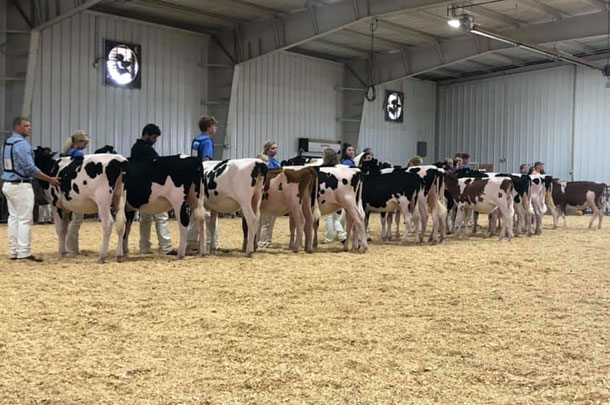
The Southern National Dairy Show was held from Sept. 21 to Sept. 26 in Stillwater, Oklahoma. Over 12 states were represented in both the Jersey and Holstein show. Photo provided by Southern National Dairy Show Facebook Page.
Though these shows took place in different parts of the country, a commonality between the four was recognized by show organizers and exhibitors. Everyone involved was genuinely happy and thankful to have the opportunity to do what they love during one of the toughest years for the dairy industry, the organizers say.
“The one thing I noticed more than any other years’ past was the amount of comradery among everyone, even though there was a pandemic,” Ryan says. “We go to shows for more than just the competition part of it and the business part of it. It’s the fellowship and everything else.”
For some, participating in a cattle show was exactly what they needed to provide a sense of relief during these trying times, Ryan says. “It was one of the few places that I had been all year where it felt normal. People weren’t talking about COVID 24-7.”
There was immense gratitude for the individuals who went out of their way to make these shows happen and a sense of pride for those who stayed resilient through it all, Thomas says. “It was our mission to make this a show for our fellow exhibitors and breeders. We wanted nothing more than to make it the bright spot for these people in 2020.”
